仁爱英语教学案例分析
- 格式:doc
- 大小:46.50 KB
- 文档页数:5
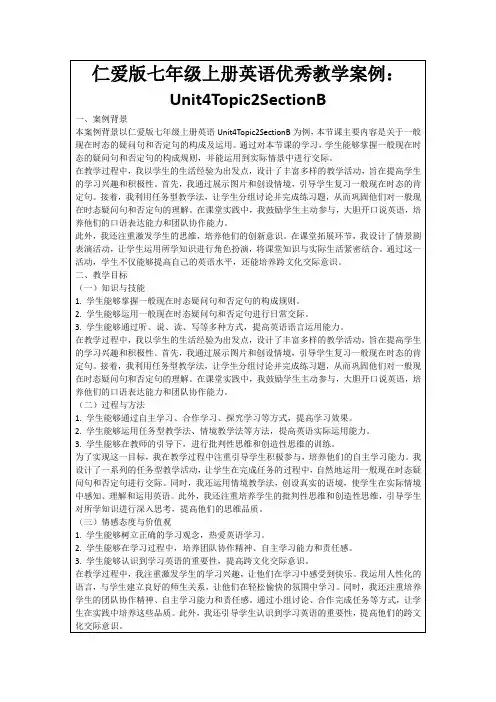
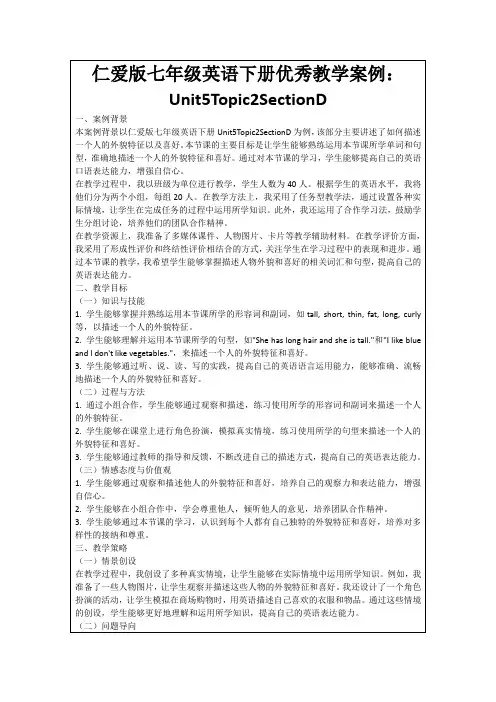
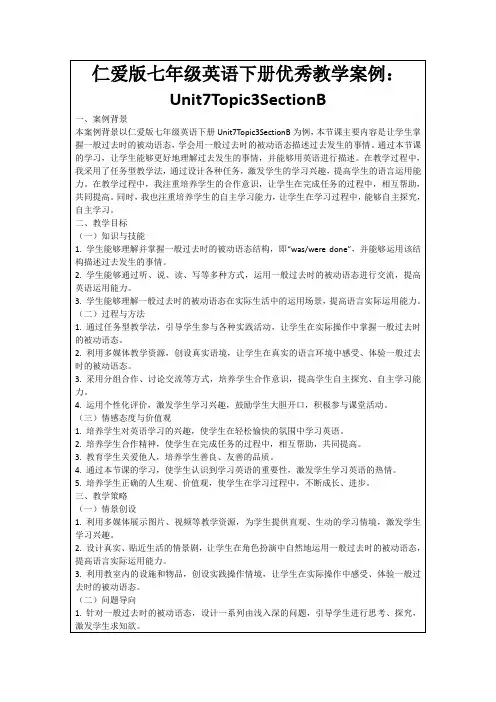
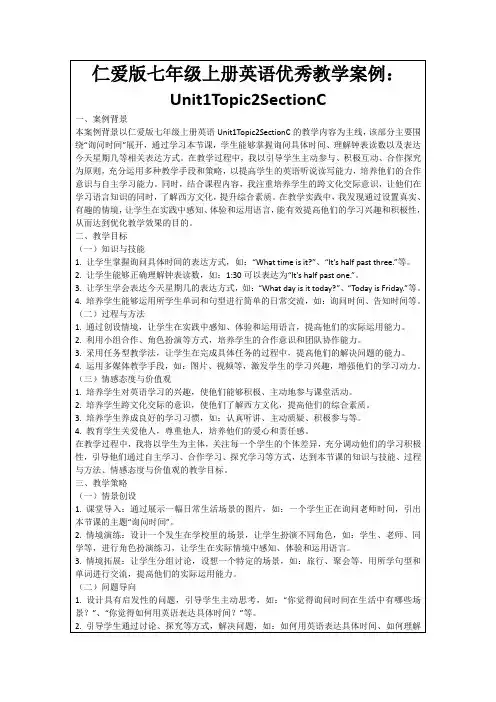
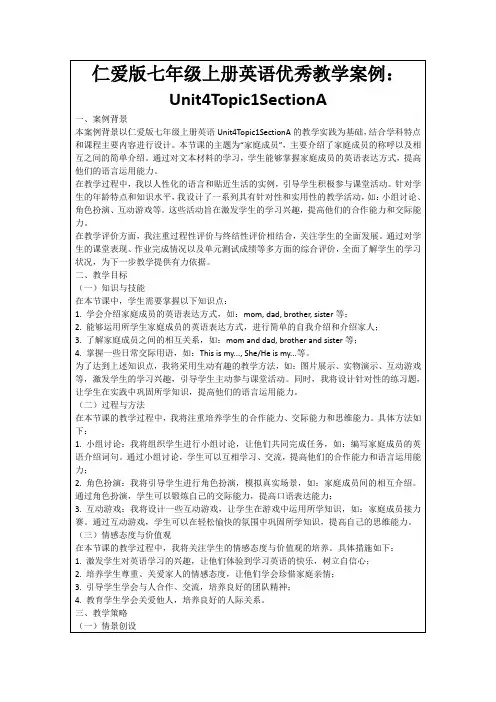
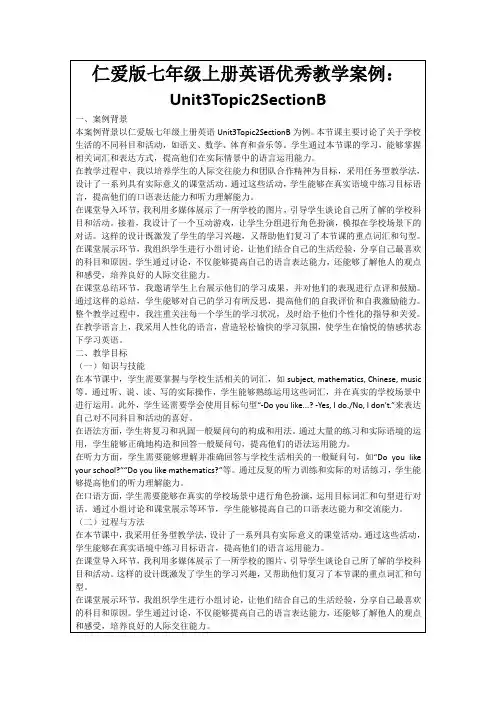
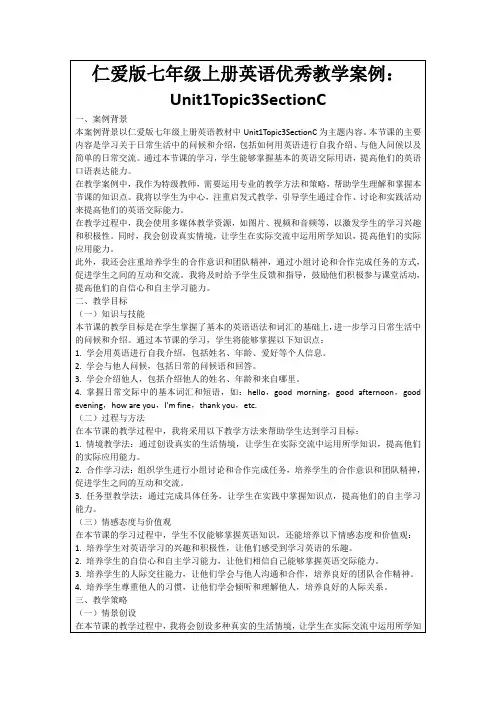
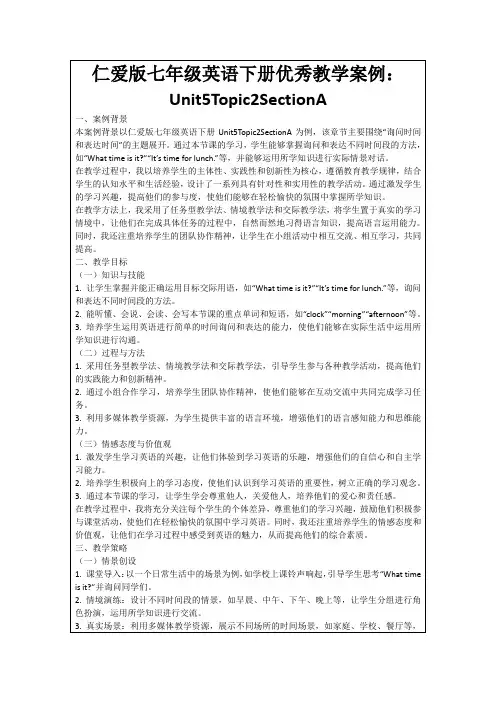
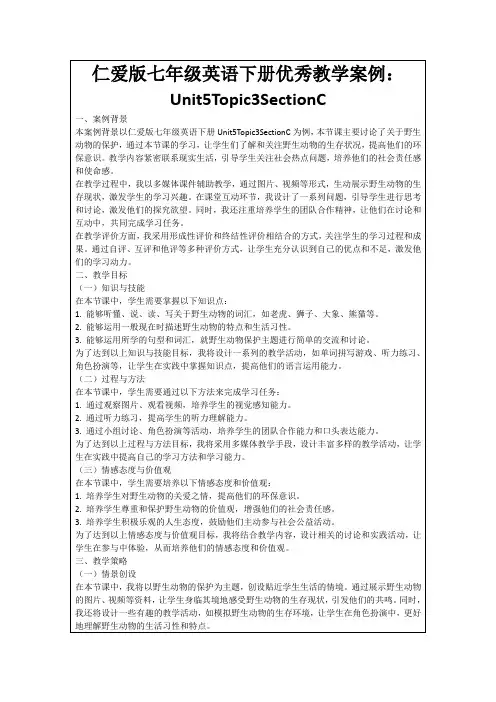
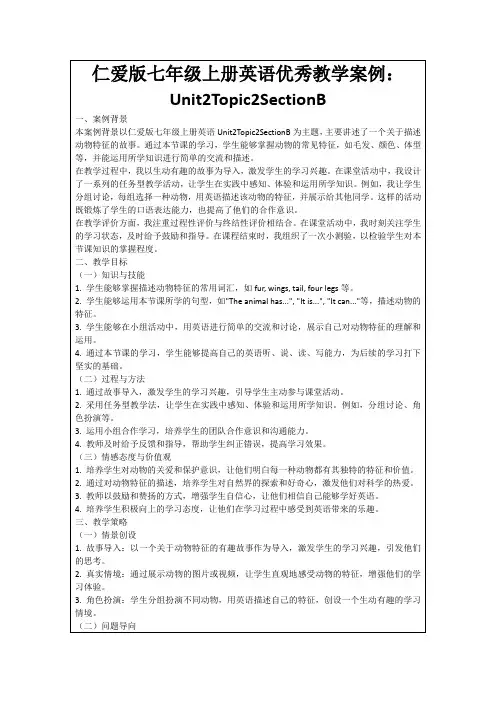
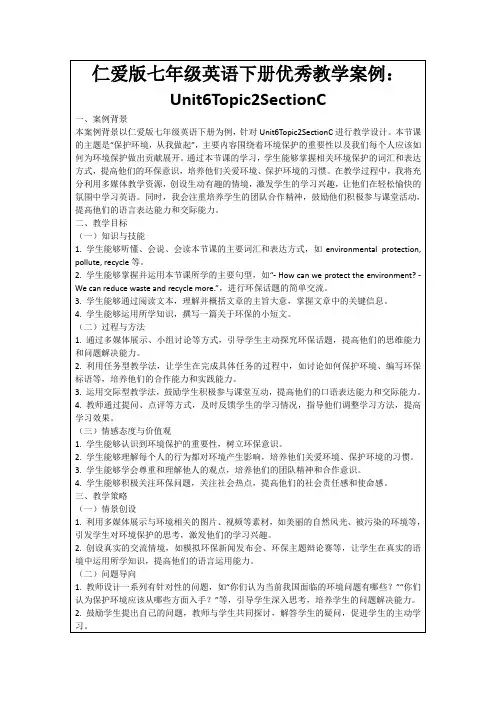
仁爱英语教学案例分析仁爱英语教学案例分析案例分析是运用系统方法,发现教育问题,结合理论和教学理论,解决问题,作出评价,并不断的进行完善的过程。
接下来店铺搜集了仁教学案例分析,欢迎查看,希望帮助到大家。
仁爱英语教学案例分析一我们教师在教学活动中要善于总结,善于应用,才能不断的推进教学活动的开展。
教师要明确教学任务,熟悉教学内容,能够做到承上启下,准确授课。
不仅备教材,还要备学生,为准确制定目标奠定基础。
该“会运用……”,就要能当堂运用,不能人为地降低或提高要求。
让学生在上课时就明确学习目标,使其学习有方向,激发其学习动机,调动其学习积极性。
教学案例(一):单词的教学在单词教学中如何变单一为多样,变死板为生动?我在教授单词的过程中十分注重单词的使用语境,如在教授cook和cooker这两个单词的时候,我分别出示了几张图片(一些橱具和两位橱师),让学生通过对图片的直观感知,从第一印象开始就对他们有一个清晰而明确的认识,从而避免了对这两个词汇的混淆。
然后再通过"He is a good cook, he has a lot of cookers。
"这样的例句加深学生对他们的理解和运用。
在教学invent单词时,让学生连带掌握相关单词,通过举例句:The great inventor invented lots of inventions。
知识浓缩后易于学生理解记忆。
教学反思:仁爱版的教材词汇量大,单词长,生僻词较多,自然也就增加了教学的难度,但我们又必须让学生掌握,否则难以适应新教材的要求。
那么我们该采取方式来教学单词呢?美国学者埃克斯雷指出:"能够引起学生学习兴趣的方法就是最好的方法."实践证明,拼图法,数字游戏,单词接龙游戏,小歌诀,顺口溜等传统教学方法并不过时,教师再辅以现代化的教学手段,借助图片,幻灯片,动漫等手段,真正达到重情景,重趣味,重运用,使单词具有语言的意义,使其在特定的语境中被引出,这样既便于学生理解,印象也深刻,从而达到学以致用的效果。
Unit6 Topic1 Section B教学案例分析
Section B (1a-1c)
The main activity is 1a .本课重点活动是1a.本课共需30钟
Ⅰ.teaching aims 教学目标
1. Learn the new words : sleeper pay
2. Go on learning the usage of infinitives.
3. Learn how to book tickets.
Ⅱ. Leading-in
Show some pictures about my travel experience, then turn to the topic about travel,and the vehicles T: From sectionA we know going by bus is too slow, and it takes too long; going by plane is fast, but it is too expensive; going by train is comfortable, and it doesn't cost so much. Which is the best way for Maria's class to travel?
Ss: By train.
T: Yes, they have decided the best way to go to Mount Tai by train..Now kangkang is booking the train tickets to Mount.
[设计说明]复习SectionA ,转入sectionB,承上启下。
Ⅲ. Teaching steps
Step 1 listen to 1a,grasp the main idea of 1a. (让学生听1a录音,了解短文大意)
T: Maria's class want to visit Mount Tai and they decide to go there by train. They ask Kangkang to book the tickets. Now, let's listen to 1a and find out how Kangkang books the tickets.
Step 2 (再放1a的录音,让学生跟读,注意对话中提供的重要信息。
)
T: Please listen to 1a again and follow it.then Read the dialog in pairs and answer the questions.
(在课件上呈现)
(1) When does the train leave Beijing?
(2) When does the train arrive at Taishan Railway Station?
(3) What is the price for the hard sleeper?
(4) What is the price for the soft sleeper?
(5) How many tickets does Kangkang book?
(6) What is Kangkang's telephone number?
【设计说明】(学生读完对话后,让学生抢答上面的问题。
通过回答上面的问题加深对课文的理解,完成1b)
Step 3.read 1a again finish 1c (给学生一些时间去完成
1c并找出课文中重难点)
T:have you found something that you don,t know? S: No
T: I have something to say:
1.We have tickets at 145 yuan for the hard
sleeper…
at 意为以…,在…,一般用在表示价格,年龄,速度,等词的前面如:at the price of ,at the speed of ,at the age of 2.please pay for the tickets before 5:30…
:(1)pay for sth.付……的钱. . (2) pay money for sth.付钱eg:I paid 3000yuan for my pen.(3)pay for sb.替某人付钱…eg: Don,t worry ,I will pay for you.
【设计说明】呈现本节课重难点。
Step 4 Practice
make a new dialoge about booking tickets according the clues
(假设你全家周末要要去看电影。
请设置一个订票的对话。
按下面的线索。
)
A: Hello, guangming Cinema, what can I do for you? B: I would like to book som e tickets to …..(电影之声) A: OK! How many would you like?
B :I’d like….(三).by the way,how much is the ticket?
¥ ……(25元)each ticket , please pay for the ticket(s) before…。
(8点)
A: Oh,I see.
B: Your name and telephone number, please?
A: I’m....(赵丽颖),My telephone number is (1321212123)
B: OK,bye!
A: Bye-bye!
【设计说明】拓展对话,巩固怎样用英语电话订票。
Step4 巩固练习
1. I think the best way _____Beijing is _____the train
A. get to; take
B. to get to;take
C. to get to ;to take
2. We have nice T-shirts ____the price of ¥15 each.
A.in
B. at
C. for
3. I’d like _____a train ticket to Dalian.
A.to book
B. book
C. booking
4. They decided to _______ ¥108 for a standard room with air conditioning because its condition is better.
A. cost
B. spend
C. pay
【设计说明】巩固本节课语法和知识点。
IV:Homework(作业)
(1) (复习不定式。
)
(2) finish exercise book p 29(3)编一个关于订票的对话。
【设计说明】课下进一步巩固本节课重难点。